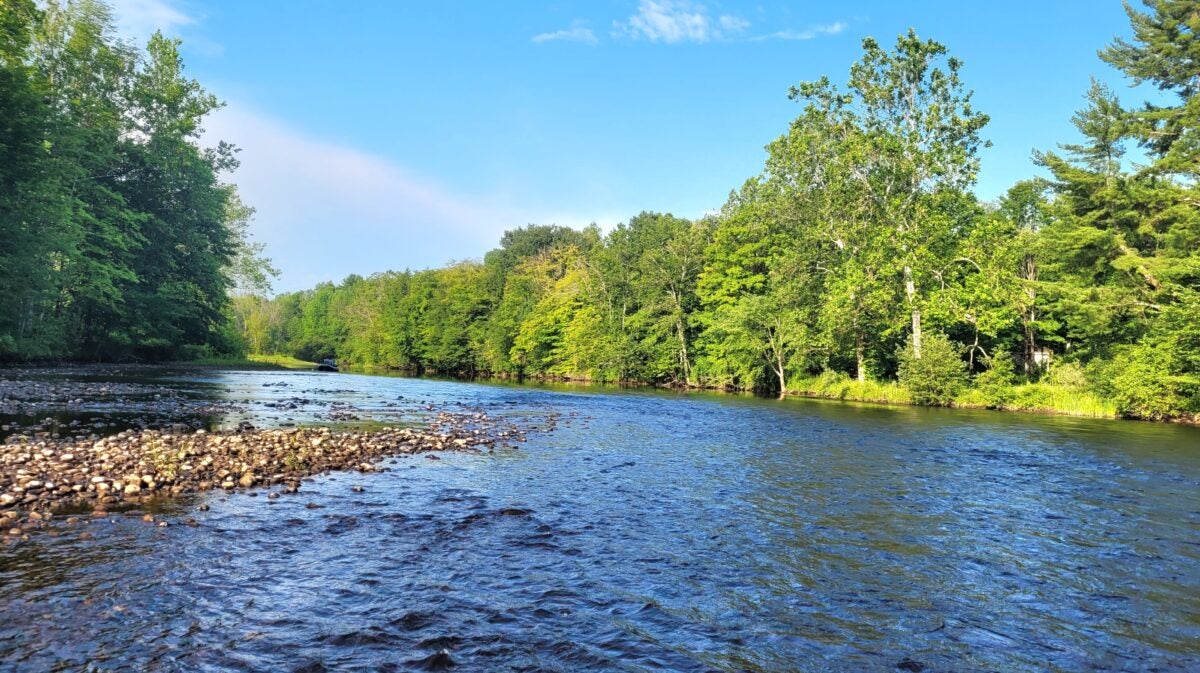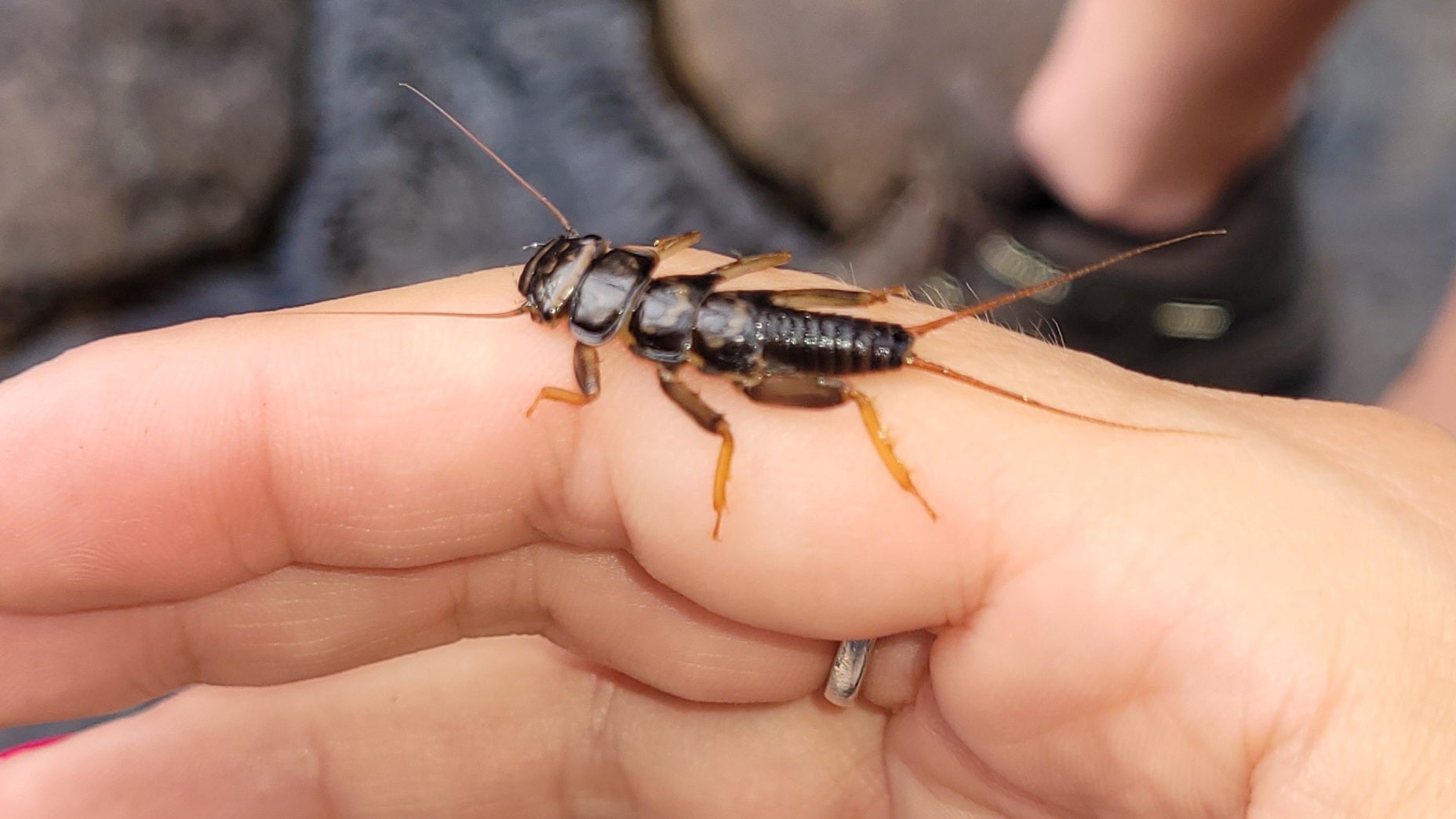Connecting Kids to Conservation, One Kicknet at a Time
Megan Plete Postol 03.04.24

While paying attention to the way his kids learn, Jordan Ross noticed something that set his gears turning. They lacked enthusiasm for learning about the outdoors, watersheds, and conservation through the traditional avenues. The way these subjects were taught in the classroom didn’t excite or engage them. “From observing them, the inquisitive side of learning, and curiosity element, wasn’t there,” Ross said. That wasn’t the case when he took them to a local stream with a kicknet to turn up rocks and investigate what was crawling underneath. Suddenly their eyes were lighting up and they were interested in learning.
Fishing Coverage on AllOutdoor
- Feeding Tarpon at Robbie’s of Islamorada – Village in Florida
- AllOutdoor Review – St. Croix Trout Series Spinning Rod 7ft Light
- Northland Tackle’s Elite Series Marabou Jig – Ultra-Soft, Fluffy Feathers
- Cook your Catch – Delicious, Smoked Bluefish Dip
- A Day in South Korea – Crucian Carp Fishing Park
“This is a small sample of course, of my own kids and their friends, Ross said,” “We kick over some rocks and we get a bunch of bugs. It’s mind-blowing.”
As he watched the kids as they stomped through the creek, he knew he wanted to find a way to apply this type of learning to a larger segment of students. Ross, who owns and operates J.P. Ross Fly Rods, formulated a plan that combines hands-on learning with conservation education, which can be implemented through the collaboration of a few key entities.

The plan is to establish a learning program geared toward elementary-aged children that ultimately gets them out of the classroom and outside interacting with their local ecosystem. He has been working with Cornell Cooperative Extension and the 4H program to develop a curriculum that achieves this goal. In addition to owning his business, Ross is the founder of Trout Power, a nonprofit organization that utilizes citizen science efforts to seek to identify, map, monitor, and advocate for the protection of wild and genetically unique brook trout populations in the Adirondacks and throughout New York. Part of the plan in organizing this program is to get not only Trout Power involved but also similar conservation organizations and groups, such as Trout Unlimited and the Native Fish Coalition.
“It is not a hidden agenda,” Ross said. “It is about working together to help kids. It is towards a bigger goal.”
The program is now in its development phase, and Ross hopes to have something launched by next winter. The tentative structure of the program is to start in the “off-season,” meaning when it is not feasible to get kids out into local rivers and teach them about the invertebrates they might encounter when they explore the waters. The schedule would most likely run from January through the rest of the school year. In-classroom education would focus on learning about the pyramid of life in an ecosystem, macroinvertebrates in the water, how certain species are indicator species, the cycle of water, and how watersheds are connected. Ross is working with innovation maker spaces to develop plans for specific lessons, where, as an example, kids might build, make, or print 3D models of those invertebrates.
The grand finale of the program would be to get students into the water with a kick net, which is a square mesh net with a pole handle on each side that is used to collect aquatic macroinvertebrates in a stream. The students would apply what they had learned throughout the program to identify the creatures, especially the aquatic macroinvertebrates, that they discovered in the rivers. Common aquatic macroinvertebrates include stoneflies, mayflies, dragonflies, crayfish, snails, leeches, and other various insects. Observing what is in a specific water can reveal a lot about the condition of it.
“Indicator species, such as stoneflies, are an indicator of a good ecosystem,” Ross said. “If you do a kicknet study, for example, and find a lot of worms, snails, water pennies, caddisflies, but no mayflies and no stoneflies, that is an indicator of an ecosystem that is not A-plus.”
Other indicator species are brook trout, butterflies, and several other insects. The curricula will be focused locally on the premise of developing a sense of place. This particular pilot program will focus primarily on the Central New York/Mohawk Valley region but will be designed so that the bones can be adapted to teach anywhere. The hope is that the program is picked up and localized to new places. In the Adirondacks, for example, students might learn about how road salt affects the salinity of rivers and learn to test it. In the Hudson region, students might learn more about urban pollutants.
“The river monitoring aspect of the program is a big thing from a citizen science point of view,” Ross said.
Some of the hard skills that might be included in instruction are river wading and fly tying. Ross is excited about the potential the program has to grow these humble beginnings.
“You have to do it and be comfortable with iterating,” Ross said. “Sometimes people want to deploy perfectly. I’m fine with starting at a C+ and iterating to an A. Doing this well will depend on the creativity of the people in the group.”
With the support of Cornell Cooperative Extension and the 4H program, Ross hopes to spend the rest of this year making the plan, rousing volunteers, and fine-tuning the curricula for a launch of learning in early 2025.